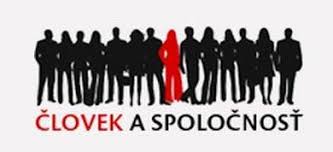Hetero- and Auto-Stereotypes of Ethnic Minorities in Slovakia
Hetero- and Auto-Stereotypes of Ethnic Minorities in Slovakia
Author(s): Jozef Výrost, Juraj MartonyikSubject(s): Social psychology and group interaction, Evaluation research, Inter-Ethnic Relations, Ethnic Minorities Studies
Published by: SAV - Slovenská akadémia vied - Spoločenskovedný ústav SAV
Keywords: Ethnic minorities in Slovakia; Auto-stereotypes; Hetero-stereotypes; Stereotype Content Model;
Summary/Abstract: The ethnic map of the Slovak republic (5, 397, 036 citizens according to the 2011 census) consists of 14 ethnic groups with Slovaks (80.7%) constituting the majority. Hungarians (8.5%), Roma (2.0%), Czechs (0.6%), Ruthenians (0.6%) and Ukrainians (0.1) represent– according to Wolff’s classification (2008) – the traditional national minorities. The other 8 ethnic groups (German, Polish, Croatian, Serbian, Russian, Jew, Moravian, Bulgarian) do not each exceed 0.1%. In this article we will concentrate our attention on auto- and hetero-stereotypes of members of five traditional ethnic minorities living in Slovakia: Hungarian, Czech, Roma, Ruthenian, and Ukrainian. Through intergroup stereotyping we understand standardized and simplified images and beliefs of individual members or groups as a whole. Stereotypes usually correspond to a holder’s beliefs and social objects; in the case of intergroup stereotypes these are typically personality characteristics. Stereotypes have a serious impact not only on the formation of the relation to the target group but also to the formation of in-group atmosphere and appurtenance. The current view on stereotypes is expressed by Stereotype Content Model (SCM) formalized by Fiske, Cuddy & Glick (2007). In the SCM, warmth and competence are two orthogonal dimensions of social judgments, and social targets fall into one of four quadrants created by a combination of these two dimensions. The combination of these dimensions generate distinct emotions: admiration (when warmth and competence are both high); pity (warmth high and competence low); envy (warmth low and competence high); contempt (warmth and competence low) (Cuddy, Fiske, Glick, 2008). Data was collected in the second half of 2017 in all regions of Slovakia. The total quota sample in our research consists of 972 adult respondents: 165 Hungarians, 160 Roma, 165 Czechs, 160 Ruthenians, 160 Ukrainians, and 162 Slovaks. The mean age of the sample was 45.5 years. Respondents in the PAPI mode of interview were asked to answer more than one hundred questions. In our analyses in accordance with Stereotype Content Model we used 6 bipolar items scaled in a 7-points answer format (with 4 as the neutral point of the scale). Three items represented the Warmth dimension (warm-aloof; honest-unfair; sincere-disingenuous) and three items represented the Competence dimension (responsible-irresponsible; assertive-weak; hardworking-indolent). The standardized Cronbach reliability coefficient Cα for Warmth scale was 0.897 and for the Competence scale 0.891.
Journal: Človek a spoločnosť
- Issue Year: 21/2018
- Issue No: 4
- Page Range: 3-15
- Page Count: 13
- Language: English

